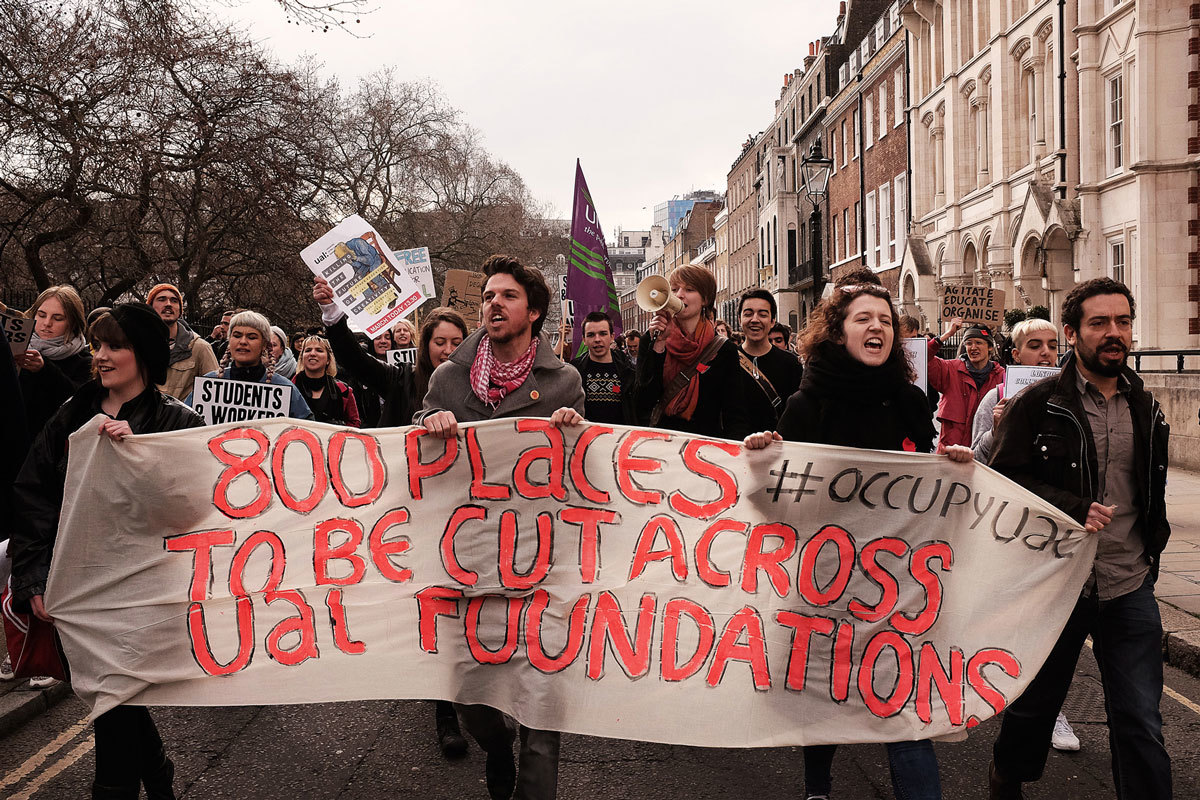Our Art Schools. They’re responsible for the biggest contributions to our global cultural scene; from the red Routemaster bus to the creations of Lee McQueen currently on show at London’s V&A museum. The list goes on. In fact, it actually goes way past anything solely bound to art and design. Yet, those schools are increasingly under threat. With every financial cut, every staff redundancy and every course closed, when is it actually time to stop and say enough? Because, if our government will not look after our art schools, it’s up to us to do it ourselves.
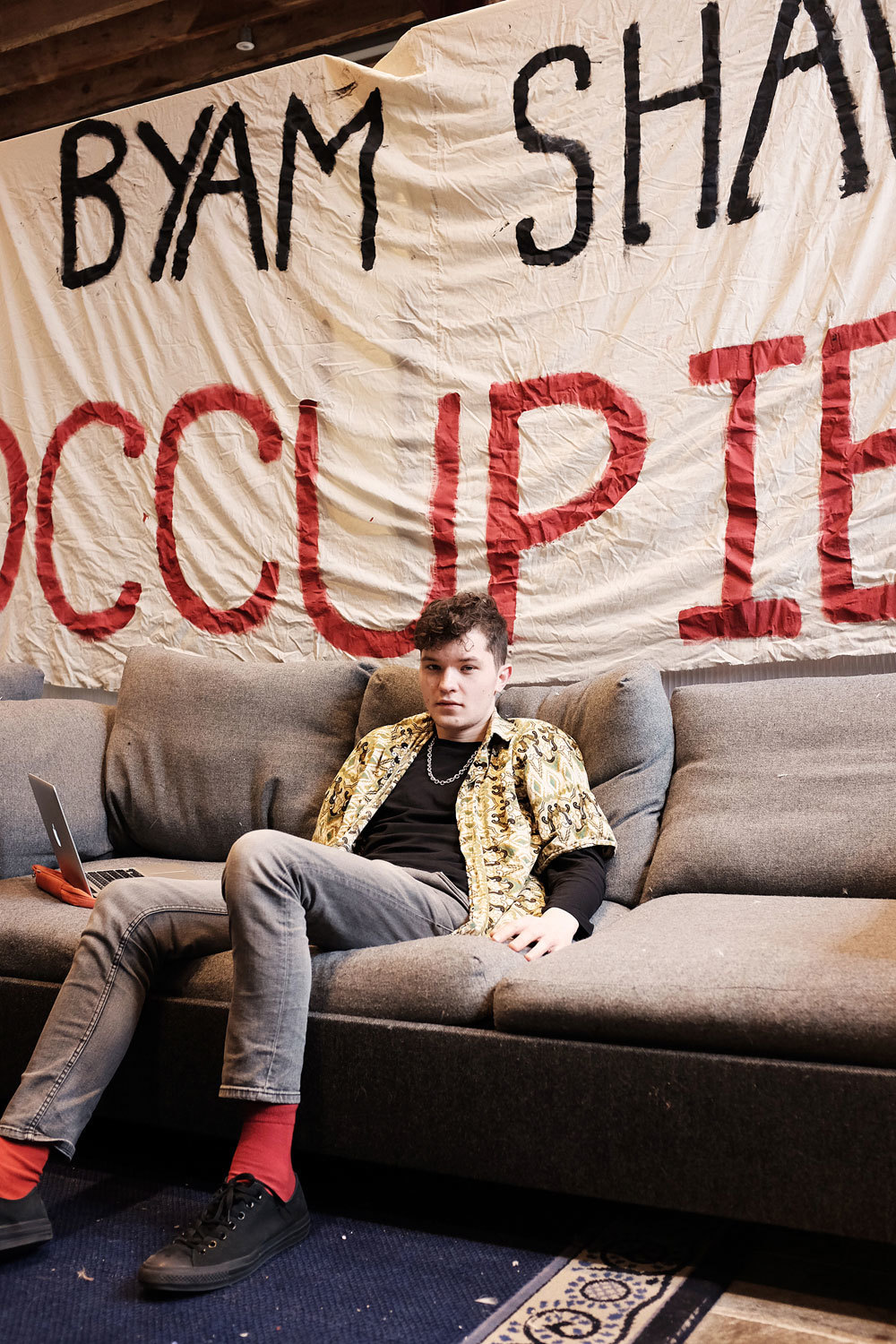
That’s the mindset behind #OccupyUAL, a student protest that has seen dozens of students seize control of Central Saint Martins’ administration offices in King’s Cross, part of the University of the Arts London, as antagonists to announced cuts to Foundation courses and the Widening Participation scheme. The occupation is in its sixth day, with students sleeping in the space, holding lectures with inspirational speakers and creating artwork that speaks of their concern. “It’s clear that this government couldn’t care less about the arts,” said Shelly Asquith, President of UAL’s student Union. “I would expect better from our own university.”
Currently, foundation courses are free to under 19 year olds – providing a feasible entry point into the arts sector for hundreds of young people. It’s a vital breathing space to experiment and to decide, or not to, where one might best place themselves in the array of creative careers on offer. Karol Streisand, a student and #OccupyUAL participant told me “for many, art foundations are the only way to access arts education. Foundations are an excellent way to find the direction that you want to go in your life. They give you the skills and knowledge which prepare you for an undergraduate degree – raising your chances of doing really well.”
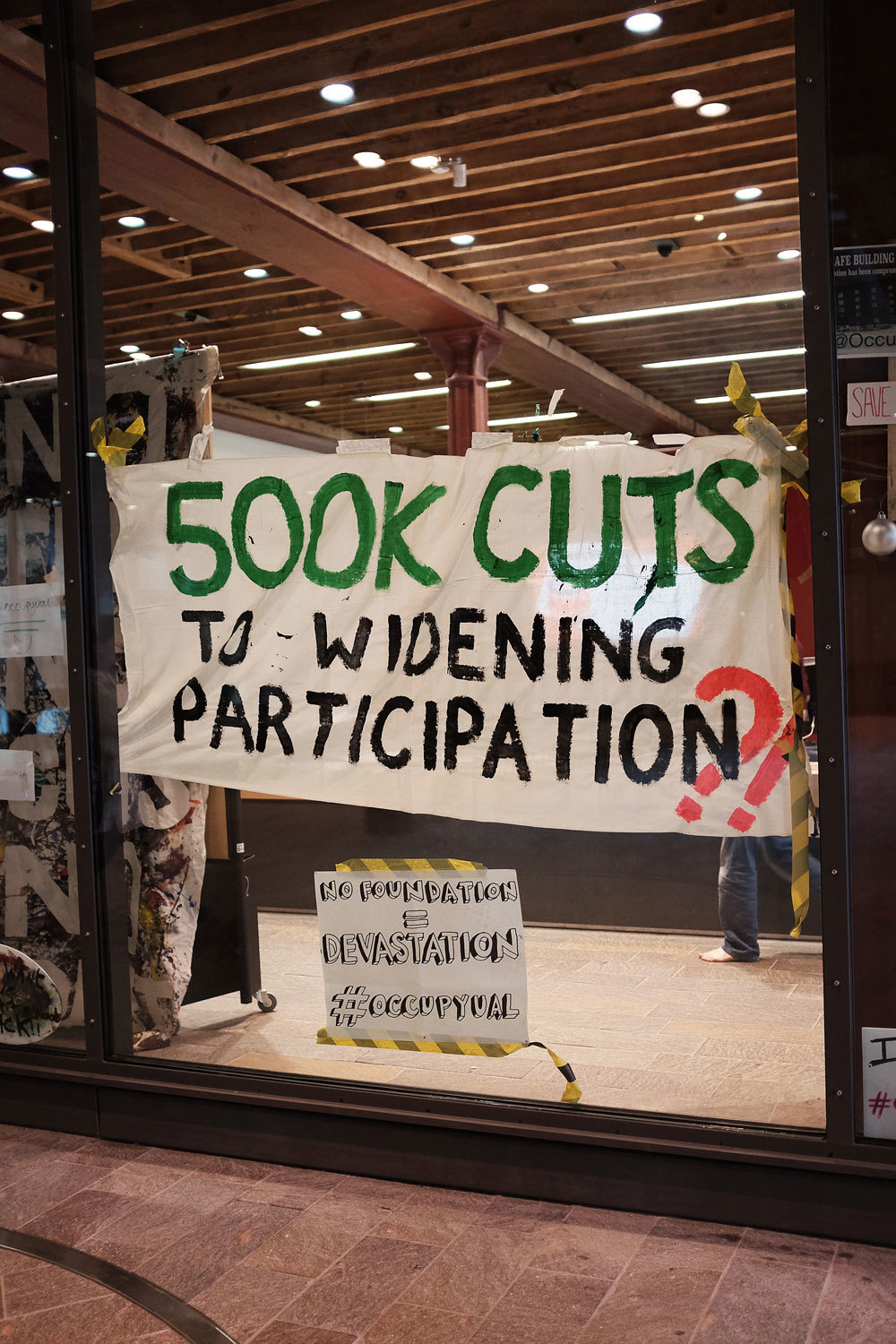
Some 600 places are to vanish on those foundation courses if plans are to go ahead at UAL. But that’s not just happening at schools in London. It’s a national problem. It’s also forcing staff into early redundancy – artists and designers who rely on that income to advance their practice, many of whom are leaders in their fields. For an industry that generates £8million an hour and employs just under 2 million people, that’s an alarming figure. For this school alone, that’s 600 people that the proposed system will have failed. Multiply that across many schools, and the figures leave little to the imagination.
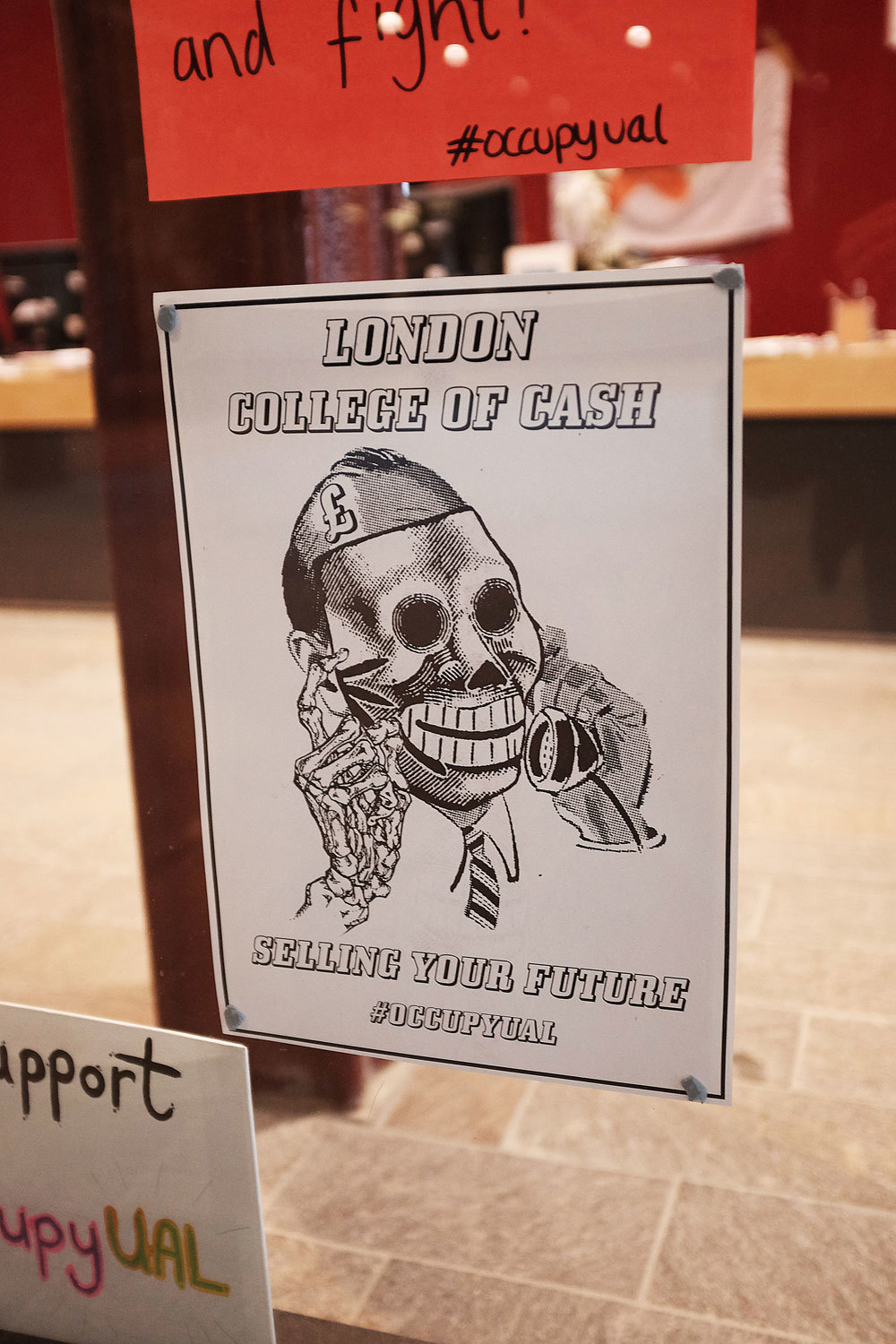
The UK’s Widening Participation schemes are also under threat. These are the programmes that dedicate a team at art schools to supporting the inclusion of people from marginalised backgrounds, bringing them into the foundation courses and then BA. Tower Hamlets, London’s poorest borough with 42% of young people living below the national average, has seen some of the greatest progress into art schools and employment. I’ve met some of those people first hand. They’ve escaped financial hardship, abuse, and sexual violence. Art school has provided them with the possibility for change. Tasnia, a young woman enrolled on one of the W.P. programmes with an aim to go into foundation said, “being involved with other young people and seeing them go into the arts made me change my mind. I was going to study biochemistry and had never done art before. I never thought I could do it.”
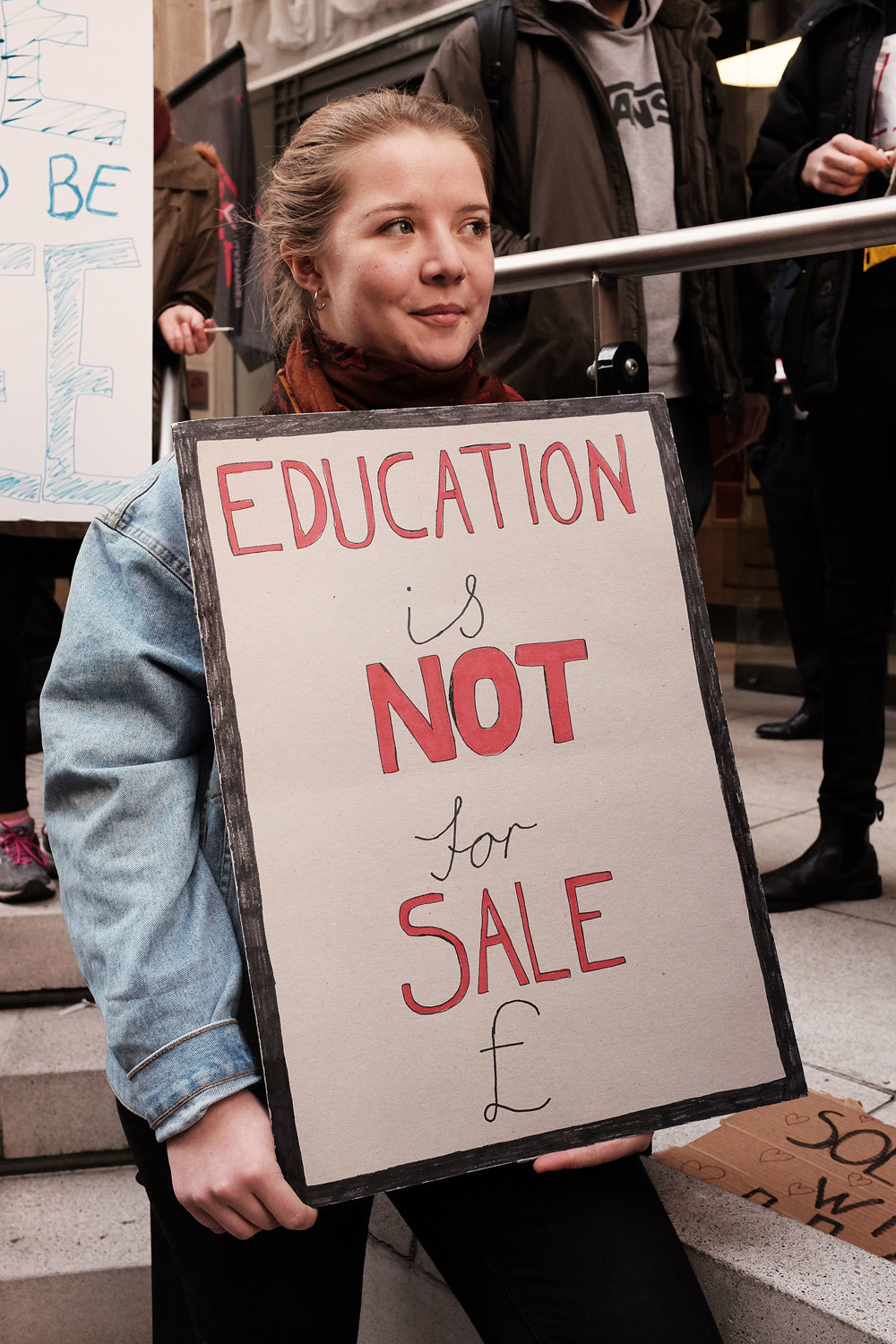
OccupyUAL is just one of the many protests that are defending our rights to those educational services. They have delivered five key demands as part of their stance, which not only echo the issues faced at UAL, but as part of wider educational cuts in general. These are: No cuts, a democratisation of universities, no institutional racism, free education and a right for students to protest in peace. “UAL management have continually undermined education in favour of profit-making,” added Asquith. That business over breadth across our university system is something that has to stop.
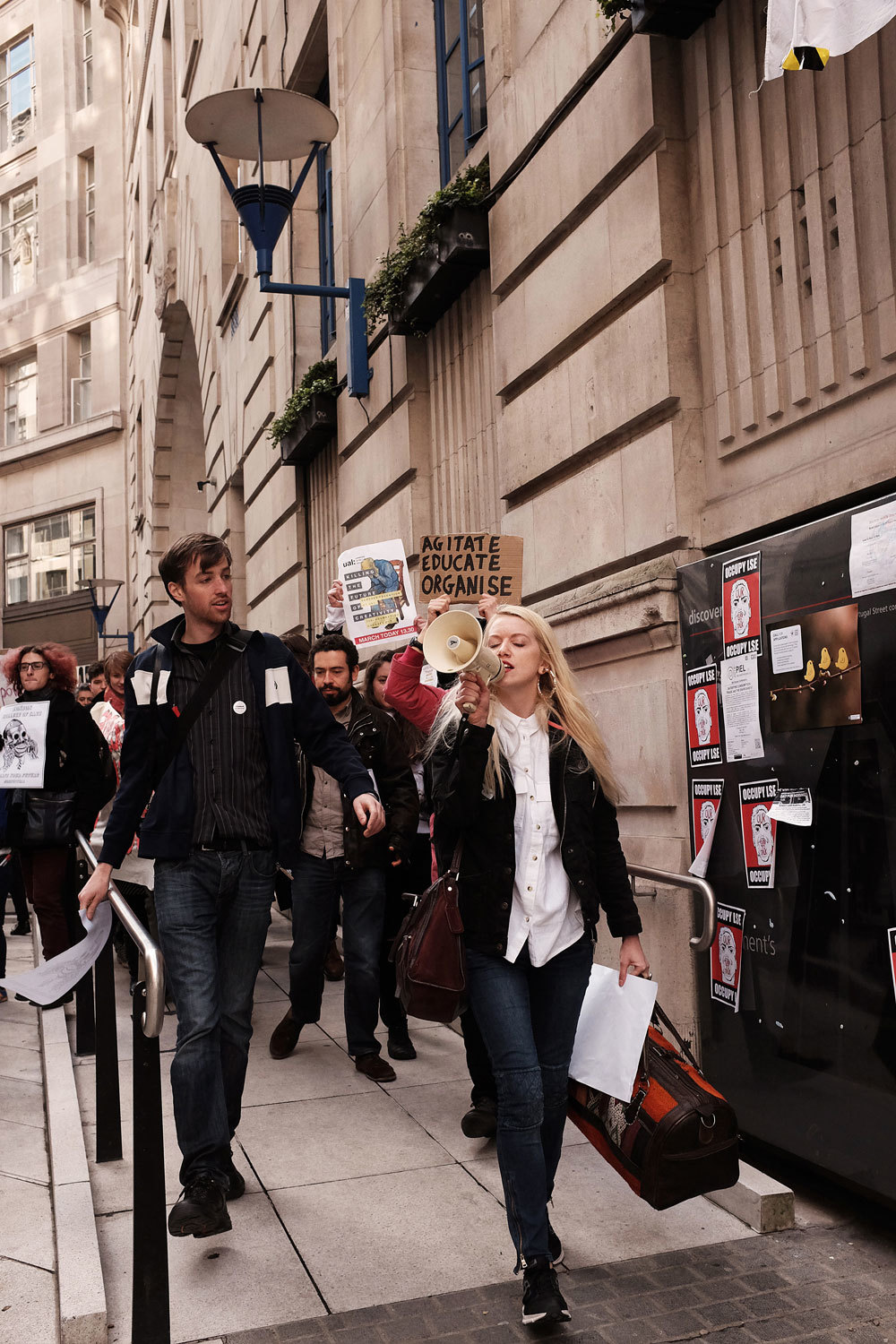
In just over four days, the #OccupyUAL campaign has garnered a remarkable following across Twitter and Facebook – with an online petition goal of 2,500 almost reached, and various other schools and universities joining their plight. “My grandparents’ political views are based on what they see on TV. Where you only see information that benefits the richest and most powerful,” Karol added. ” Mine are based on the information sources that I trust, and most of them are on the Internet.”
“I would like to encourage everyone to stand up for what they believe in and fight the corrupt system in which we live in. There are many ways of protest, find your own individual one and make a change! Even the smallest actions make a difference.”
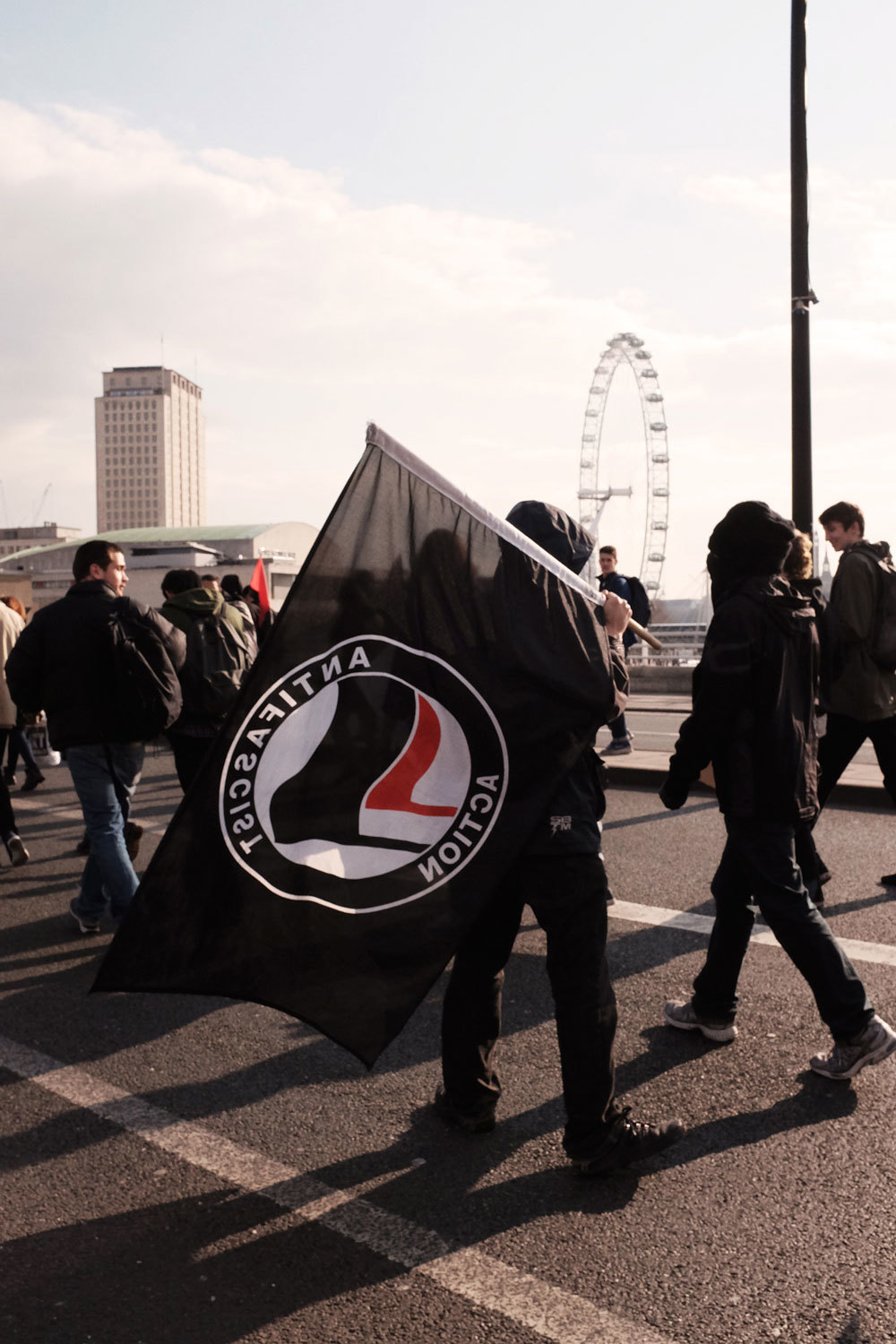
It’s rousing to see just how powerful technology has become in light of protests like this. The hashtag has become the new loudspeaker. The @, the new protest rally. Hundreds of thousands can now be called upon to unite for a cause, regardless of the country they are based in and in a very short time frame. The message can be passed from one place to another – a steady stream of strength and support from the furthest corners of the globe. A peaceful voice, on a mammoth scale. That’s revolution evolution. The question remains, will you join in, and stand up for what you believe in?
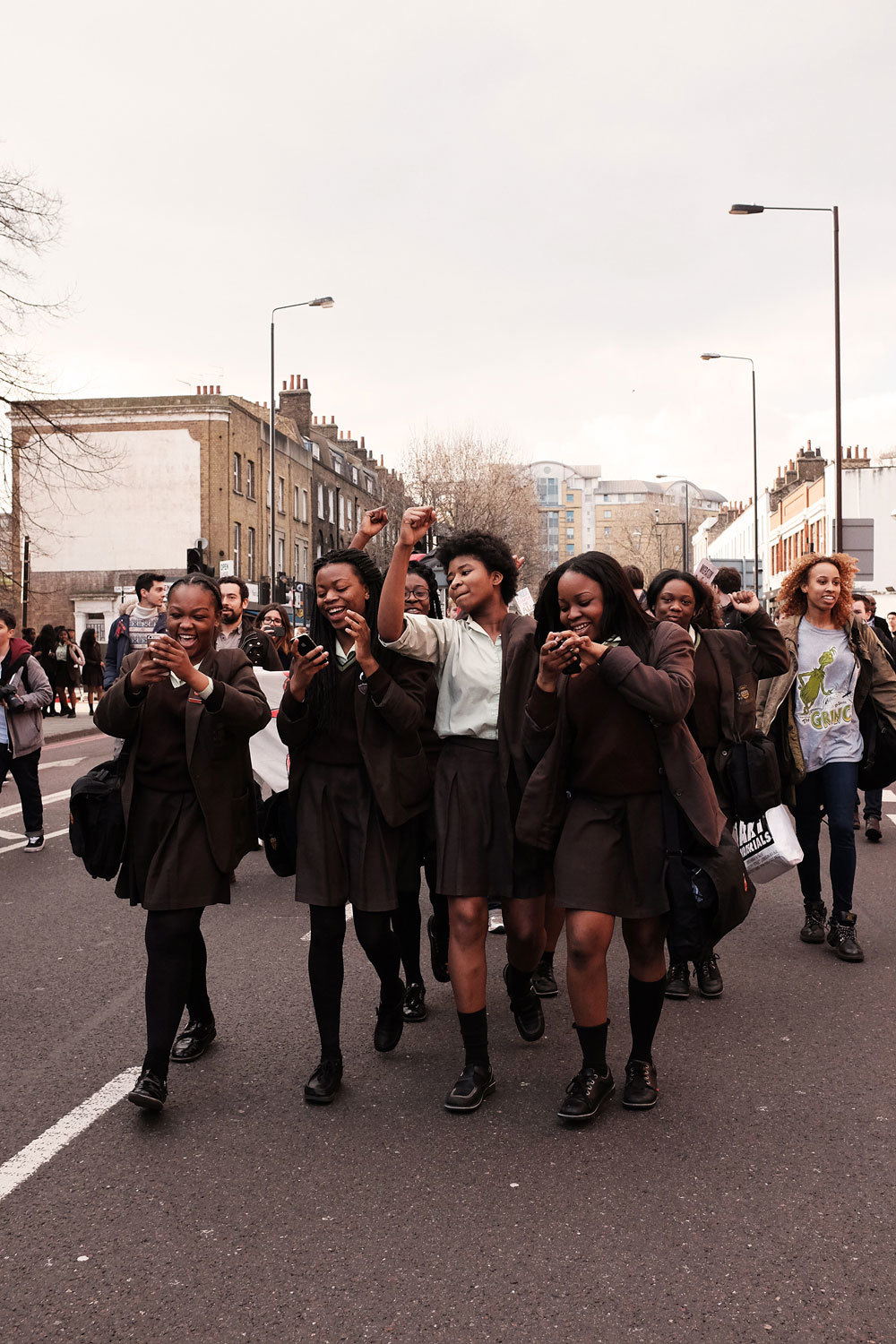
Credits
Text Greg French
Photography Matt Martin
